Recovering South Korean shopaholic-turned-climate activist Lee So-yeon used to buy new clothes almost daily — until a US$1.50 winter coat triggered an awakening that stopped her shopping entirely.
While looking at the ultra-cheap padded jacket at an H&M shop in the US, where she was working at the time, Lee asked herself how any item of clothing could be sold so cheaply.
The 30-year-old embarked on a deep dive into fast fashion production methods and was horrified at the human, social and environmental toll hyperconsumerism is having on the planet — and on the mental health of women who make and buy cheap clothes.
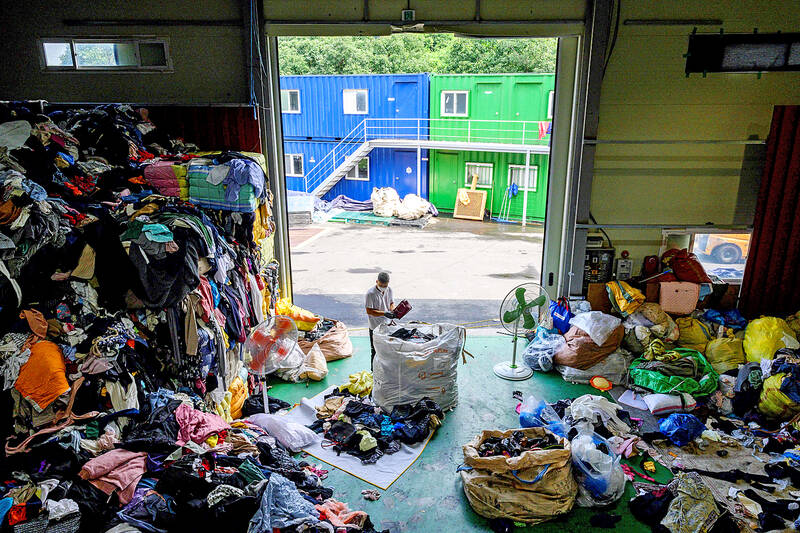
Photo: AFP
“I used to buy one new outfit each [working] day of the week,” Lee said, adding that each item from major high street retailers would typically cost less than a dollar.
However, the reason the clothes are so cheap, Lee learned, is because the women who sew for companies are paid little, while the business model itself is causing significant environmental harm.
Lee stopped buying any new clothes — and has not purchased a single fast fashion garment since her epiphany about six years ago. Her much more compact wardrobe consists of used items that she received from friends and family, including a vintage leather jacket that once belonged to her mother.
Unlike fast fashion items, which are often designed to be thrown away after just a few wears, each piece is irreplaceable, because it carries a unique story and history, she said.
“Ultimately, the most eco-friendly clothes are the ones already in your wardrobe,” Lee said.
Lee now organizes clothing swaps with her friends and family. and has written a book to promote the idea of valuing garments for “the story behind it,” rather than chasing ephemeral trends.
She is part of a small, but growing global movement seeking to promote second-hand clothing and help people — especially women — opt out of the cycle of overconsumption.
The app Lucky Sweater provides a platform for users to trade items from their closets with each other, focusing on sustainable brands, founder Tanya Dastyar said.
“We’re programmed to believe the only way to express my fashion or show that I’m beautiful or trendy ... is new outfits,” Dastyar said.
“But you can still be fashionable and feel good and look great and not have to do that,” she said, adding that although trading clothes did not have the same quick dopamine hit as making a fast-fashion purchase, it was far more rewarding over time.
The app’s growing uptake indicates that people are hungry to shift their relationship with clothing and consumerism, she said.
“People realize: ‘I don’t have to follow trends, and I can just dress in a way that feels comfortable to me,’” she said. “Is that like a mass market thing? No. But do I feel like it can be a movement? Yes.”
For Lee, breaking the cycle of cheap clothing consumption helped her improve her mental health.
As a teenager, she would worry about what to wear on school trips at least a month in advance and would go shopping to ease her fears.
“I felt a lot of pressure about how others would see me,” she said.
However, learning about Bangladesh’s 2013 Rana Plaza tragedy — one of the world’s worst industrial disasters that killed more than 1,130 garment factory workers — was a turning point.
The factory workers died making clothes for “women like me,” Lee said.
The global fashion industry is one of the most polluting, accounting for up to 10 percent of greenhouse gas emissions, according to World Bank estimates.
Most modern clothes are made of synthetic materials like nylon and polyester, which are essentially plastic and do not biodegrade in landfills, industry data shows.
Keeping clothes out of landfills can help, but in South Korea, many still avoid used garments, said Kim Dong-hyun, who runs a used clothing export factory.
“People often don’t look favorably on someone wearing used clothes, because they are seen as unwanted items,” Kim said, adding he has found dirty diapers and food waste in the collection bins.
South Korea is the fifth-largest exporter of used clothing in the world — and activists say many garments are essentially dumped in developing countries, which lack the capacity to process them.
At Kim’s second-hand clothing factory in Paju, outside Seoul, a mechanical claw categorized piles of used clothes to be exported overseas.
“Many people treat the clothing collection bin as just a trash can,” Kim said.
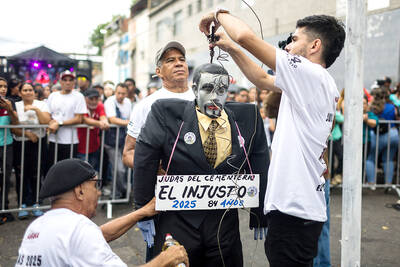
POLITICAL PRISONERS VS DEPORTEES: Venezuela’s prosecutor’s office slammed the call by El Salvador’s leader, accusing him of crimes against humanity Salvadoran President Nayib Bukele on Sunday proposed carrying out a prisoner swap with Venezuela, suggesting he would exchange Venezuelan deportees from the US his government has kept imprisoned for what he called “political prisoners” in Venezuela. In a post on X, directed at Venezuelan President Nicolas Maduro, Bukele listed off a number of family members of high-level opposition figures in Venezuela, journalists and activists detained during the South American government’s electoral crackdown last year. “The only reason they are imprisoned is for having opposed you and your electoral fraud,” he wrote to Maduro. “However, I want to propose a humanitarian agreement that
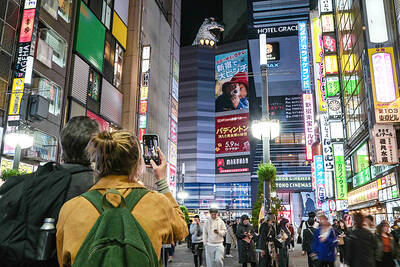
Young women standing idly around a park in Tokyo’s west suggest that a giant statue of Godzilla is not the only attraction for a record number of foreign tourists. Their faces lit by the cold glow of their phones, the women lining Okubo Park are evidence that sex tourism has developed as a dark flipside to the bustling Kabukicho nightlife district. Increasing numbers of foreign men are flocking to the area after seeing videos on social media. One of the women said that the area near Kabukicho, where Godzilla rumbles and belches smoke atop a cinema, has become a “real
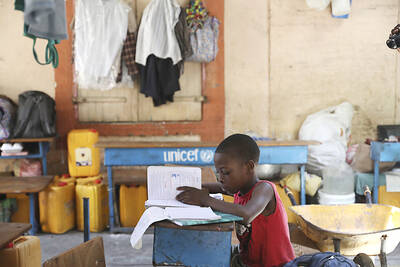
‘POINT OF NO RETURN’: The Caribbean nation needs increased international funding and support for a multinational force to help police tackle expanding gang violence The top UN official in Haiti on Monday sounded an alarm to the UN Security Council that escalating gang violence is liable to lead the Caribbean nation to “a point of no return.” Special Representative of the UN Secretary-General for Haiti Maria Isabel Salvador said that “Haiti could face total chaos” without increased funding and support for the operation of the Kenya-led multinational force helping Haiti’s police to tackle the gangs’ expanding violence into areas beyond the capital, Port-Au-Prince. Most recently, gangs seized the city of Mirebalais in central Haiti, and during the attack more than 500 prisoners were freed, she said.
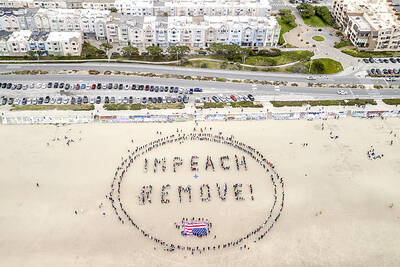
DEMONSTRATIONS: A protester said although she would normally sit back and wait for the next election, she cannot do it this time, adding that ‘we’ve lost too much already’ Thousands of protesters rallied on Saturday in New York, Washington and other cities across the US for a second major round of demonstrations against US President Donald Trump and his hard-line policies. In New York, people gathered outside the city’s main library carrying signs targeting the US president with slogans such as: “No Kings in America” and “Resist Tyranny.” Many took aim at Trump’s deportations of undocumented migrants, chanting: “No ICE [Immigration and Customs Enforcement], no fear, immigrants are welcome here.” In Washington, protesters voiced concern that Trump was threatening long-respected constitutional norms, including the right to due process. The